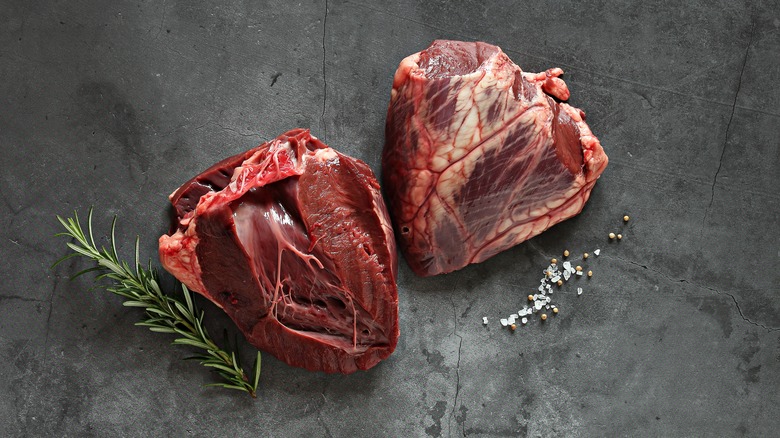The Underrated Cuts Of Meat Ben Ford Wants You To Eat - Exclusive
Chef Ben Ford is known for his love of meat. He was an early adopter of what's called "nose to tail" or "snout to tail" cooking, which involves using every part of an animal. This movement has gained traction as more people become committed to sustainable eating. Given Ford's vast experience with meat, we wanted to find out what underrated cuts he likes to bring to the table. In an exclusive interview, Ford told us that one of his favorite pieces is beef heart, which he is sad to find isn't more popular in the U.S.
Ford gained a taste for it while abroad, but when he came back, it was nowhere to be found, so naturally, he learned to prepare it himself. Although not currently a popular choice in the U.S., Ford appreciates that — with a little knowledge and effort — a beef heart can be transformed into something "truly wonderful," as he put it. Despite being an organ, beef heart tends to taste more like a steak than it does like kidney or other popular organ meats.
Ford also mentioned that he enjoys lamb neck, something that definitely doesn't leave much to the imagination. While not a common cut, if properly prepared then lamb neck proves to be a juicy and versatile piece of meat.
It's all in the preparation
Ben Ford told us that part of what attracts him to these particular cuts of meat is that they require a little more knowledge and skill to prepare: "I still tend to gravitate towards things that need a little help or benefit from a certain cooking technique and things like that." Beef heart, for example, is often soaked in milk. This particular step may not sound that important, but it offers multiple benefits.
First, the heart is a muscle that can naturally be tough and chewy. So, milk acts as a tenderizer and softens the proteins in the meat. Additionally, it's thought that soaking in milk helps to mellow out the potentially-bloody flavor of the heart, making the meat more palatable.
The underappreciated lamb neck can also require some additional effort, including the removal of the trachea and tendon. However, if you're willing to wait and slow cook it, the meat on the neck becomes soft enough to easily pull it off of the bone. As an added bonus, lamb neck contains a lot of gelatin, which helps to create thick and nutritious juices. While these dishes take extra time and effort, you're ultimately rewarded with delicious meals that use all parts of an animal, leaving nothing to waste.

